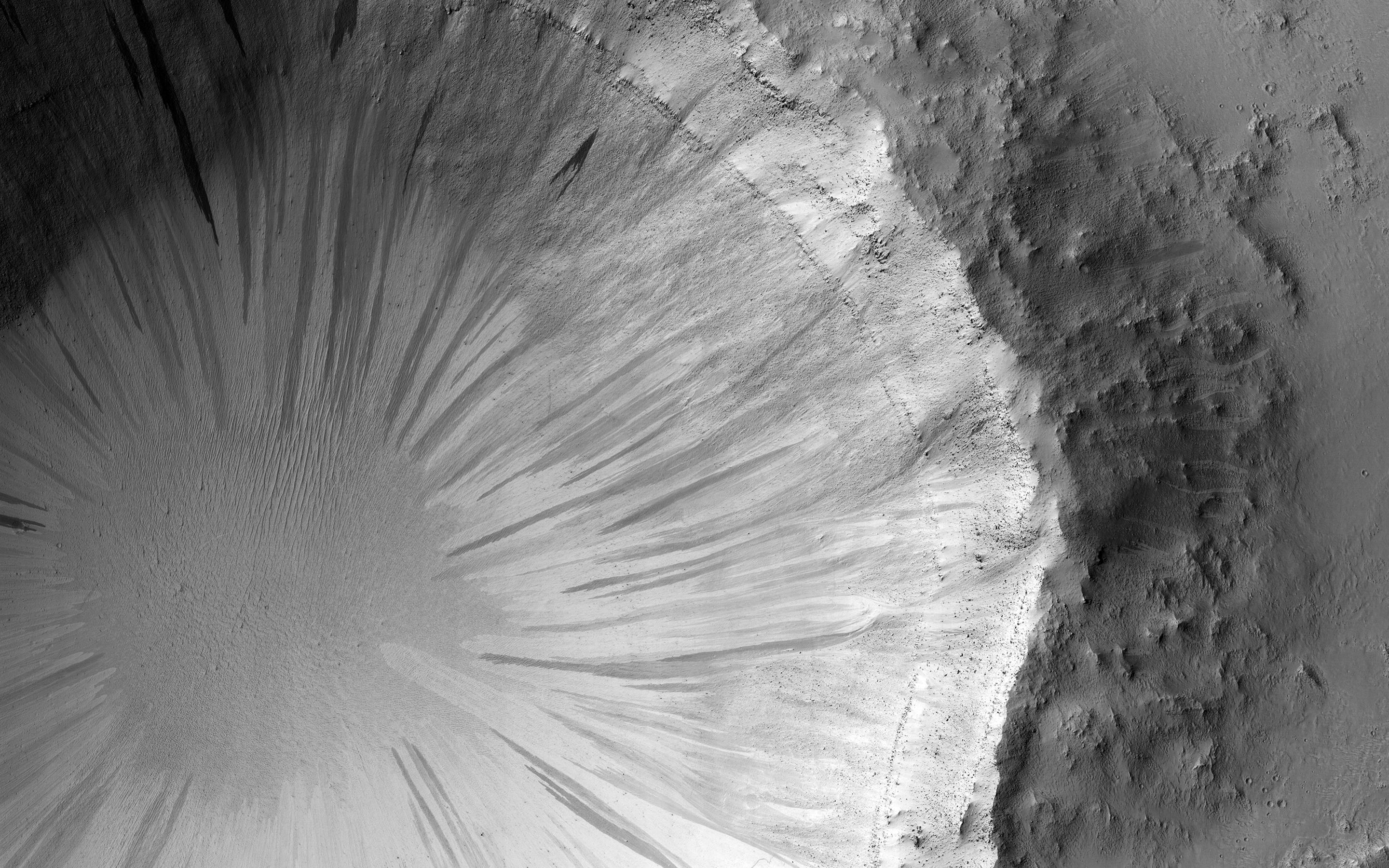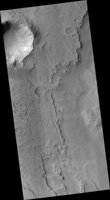
|
Bonus Beauty
- Click the image above for a larger view
- Full-Res JPEG (2880 x 1800) (992.6 kB)
- Full-Res TIFF (2880 x 1800) (5.2 MB)
Caption:

Map Projected Browse Image
Click on image for larger version
This observation was originally intended to image the "contact" between two terrain types: a rocky ridge separates the rugged left from the smoother right side. But during planning, a targeting specialist chose to extend the image further north (to the top), to capture a nearby crater. (Extending images for some extra coverage is common practice when data volume allows.)
That extension has given us a bonus beauty! The steep walls of the crater are covered with slope streaks formed by material falling down towards the crater's center. There are so many in this case that the crater is reminiscent of a delicate "dandelion clock." Looking closer, we can also see that the exposed layering gives us more information about the subsurface of Mars.
The map is projected here at a scale of 25 centimeters (9.8 inches) per pixel. (The original image scale is 27.8 centimeters [10.9 inches] per pixel [with 1 x 1 binning]; objects on the order of 83 centimeters [32.7 inches] across are resolved.) North is up.
Background Info:
The University of Arizona, in Tucson, operates HiRISE, which was built by Ball Aerospace & Technologies Corp., in Boulder, Colorado. NASA's Jet Propulsion Laboratory, a division of Caltech in Pasadena, California, manages the Mars Reconnaissance Orbiter Project for NASA's Science Mission Directorate, Washington.
Cataloging Keywords:
| Name | Value | Additional Values |
|---|---|---|
| Target | Mars | |
| System | ||
| Target Type | Planet | |
| Mission | Mars Reconnaissance Orbiter (MRO) | |
| Instrument Host | Mars Reconnaissance Orbiter | |
| Host Type | Orbiter | |
| Instrument | High Resolution Imaging Science Experiment (HiRISE) | |
| Detector | ||
| Extra Keywords | Color, Crater, Map | |
| Acquisition Date | ||
| Release Date | 2019-09-19 | |
| Date in Caption | ||
| Image Credit | NASA/JPL-Caltech/University of Arizona | |
| Source | photojournal.jpl.nasa.gov/catalog/PIA23478 | |
| Identifier | PIA23478 | |
